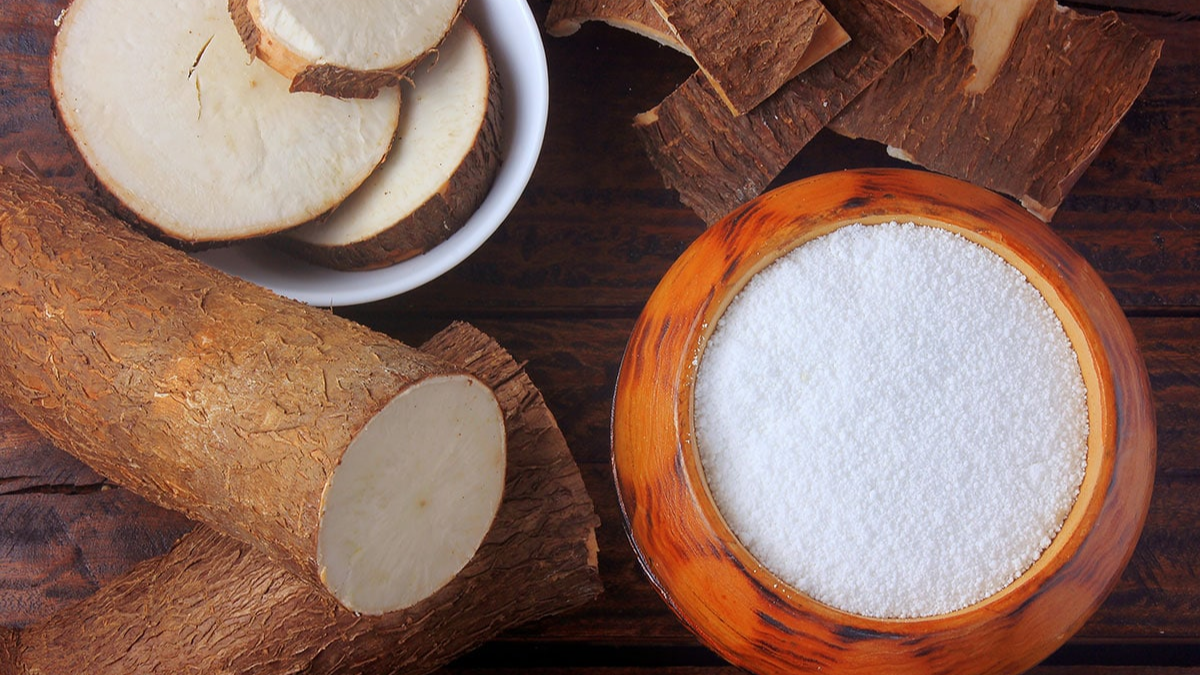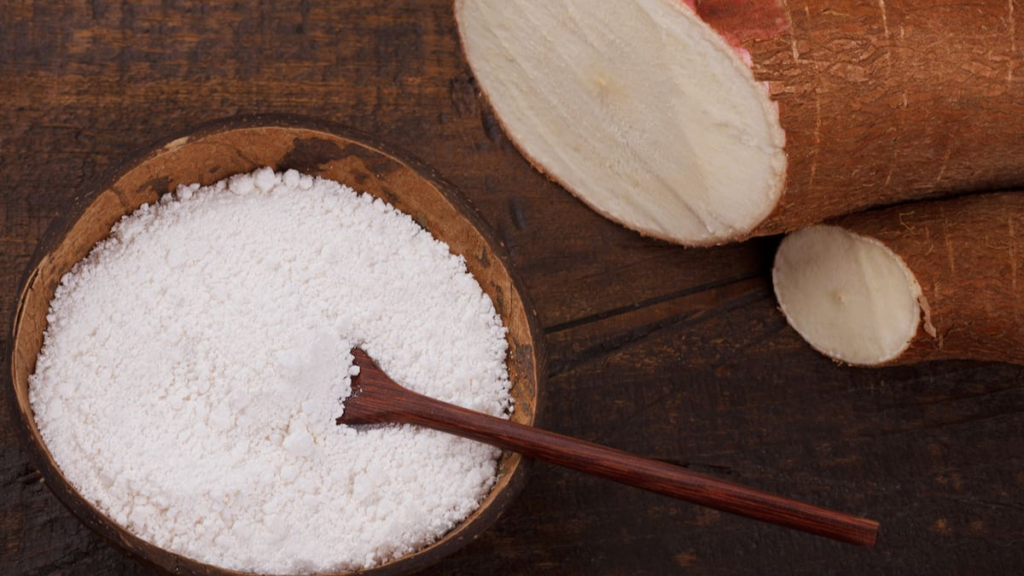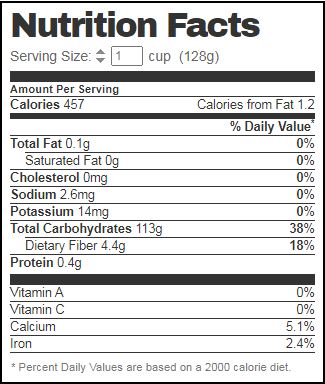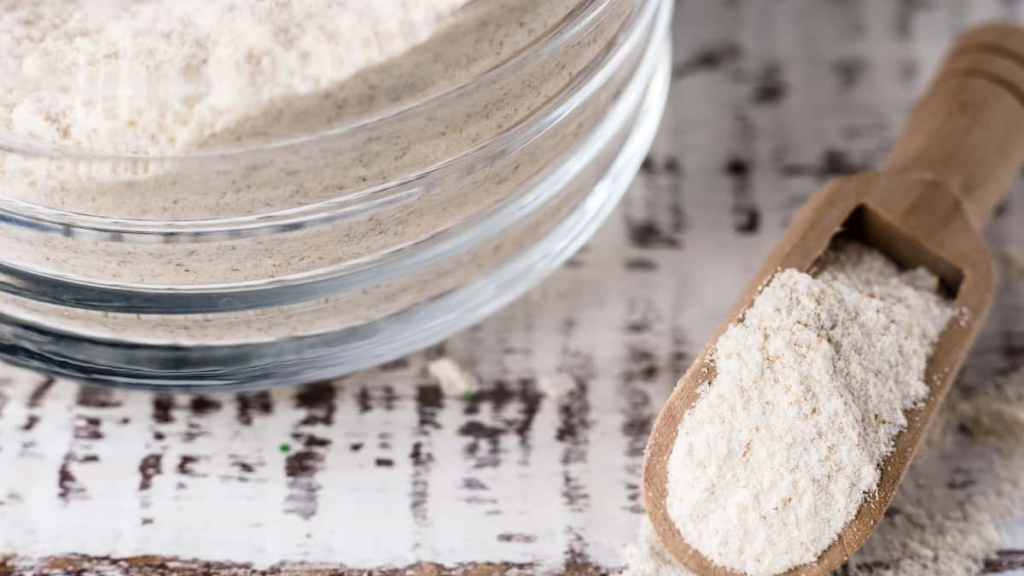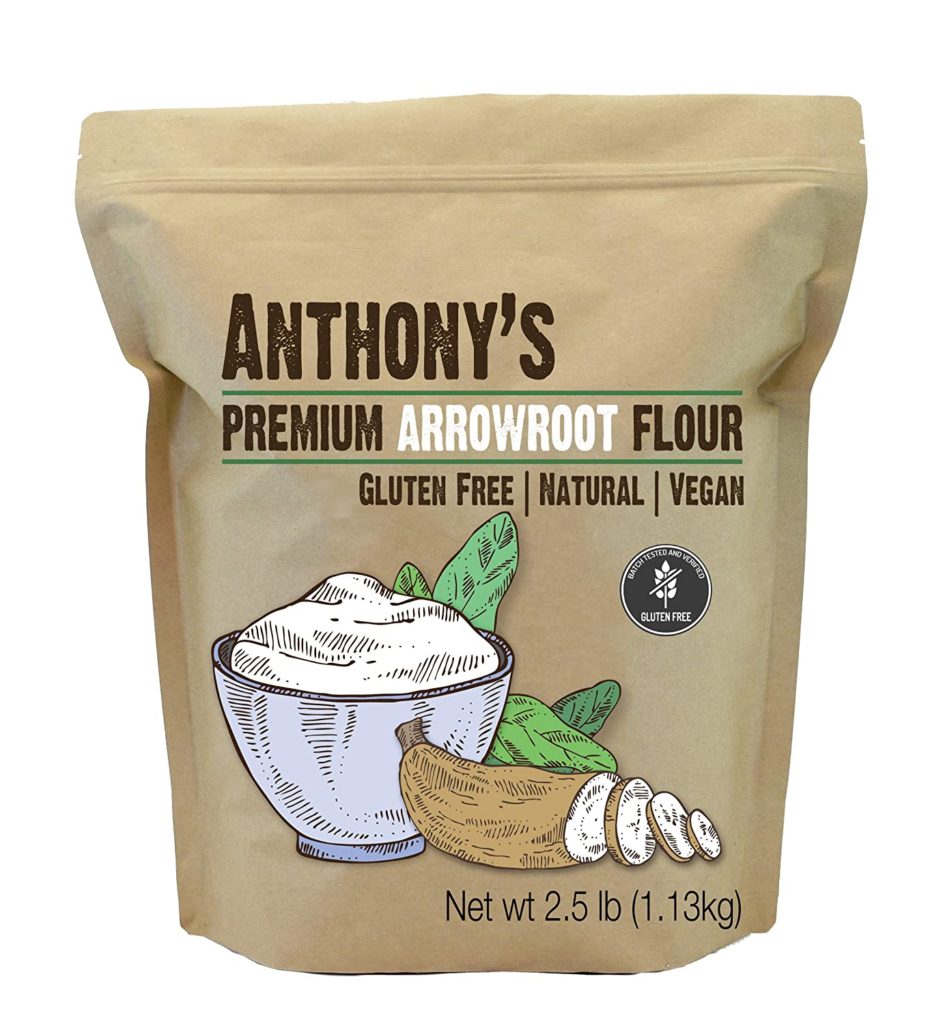Having only one flour option for baking and frying is long gone. With the surge in gluten-free living, various alternative flours can be used to make baked products, sauces, gravies, and other dishes. Varied flours can offer different flavors and textures to recipes if you love experimenting with various flours or if you cannot consume wheat or gluten. Arrowroot flour is one such alternative.
Per cup of arrowroot flour, there are 457 calories. These, too, are almost exclusively derived from carbohydrates. Arrowroot flour is manufactured from the tuber of the arrowroot plant, which is native to Indonesia. Rather than being derived from the tuber itself, arrowroot flour is manufactured by powdering the plant’s rhizome, root, and stem.
Arrowroot Flour Nutrition Facts
What is Arrowroot Flour?
The most common use for arrowroot powder is a thickener, but it can also be used in desserts and when pan-frying proteins. This powder, also known as arrowroot starch or flour, is made from dried and ground tropical plant roots. Because arrowroot does not turn the dish cloudy or change the color, it is ideal for recipes where the food’s color and shine are desired in the finished product.
When arrowroot is combined with acidic ingredients, it maintains its integrity. As a result, it’s frequently used as a thickener in jellies and fruit fillings. Cooking arrowroot over high heat for an extended period will reduce its thickening abilities; it is best to cook at lower temperatures and add toward the end of the cooking process.
Varieties
Although arrowroot flour isn’t widely available, some products are referred to as “arrowroot starch” or “arrowroot powder.” Simply put, these are different names for the same food. It’s also possible that the fineness with which each manufacturer powders their product varies.
When buying arrowroot flour, read the labels carefully. Only arrowroot flour will be listed as an ingredient in a high-quality product. Extra fillers and additives can alter how the product reacts in recipes, resulting in unfavorable outcomes (unless your recipe specifically calls for a brand that contains ingredients other than arrowroot starch).
What are the Health Benefits of Arrowroot Flour?
Arrowroot flour has a few advantages over plant-based flour. Here’s a quick rundown of how incorporating arrowroot flour into your diet can help you.
Serves as a Gluten-Free Alternative
Arrowroot flour is a gluten-free alternative if you’ve eliminated wheat flour from your diet due to celiac disease, gluten sensitivity, or a wheat allergy. Although it is not always a 1:1 substitute for wheat flour in baking, plenty of recipes will show you how to use it.
While gluten-free flours are required for people with celiac disease and gluten intolerance, there is little evidence that gluten-free flours are beneficial to people who do not have celiac disease or gluten intolerance.
Provides a Low FODMAP Option
Many people with irritable bowel syndrome (IBS) find that eating more foods low in FODMAPs (short-chain carbohydrates) helps them feel better. On a low-FODMAP diet, arrowroot flour is a great option, and these types of carbs are extremely scarce.
May Support Immune Function
According to a small animal study, supplementing the diet of mice with the powder resulted in increased blood antibodies against harmful pathogens. More research is undoubtedly required to determine its effects on humans and the amount of it they would require.
May Relieve Diarrhea
Arrowroot flour has the potential to be used as a home remedy for diarrhea. People with IBS-D (irritable bowel syndrome with diarrhea as the primary symptom) were given 10 milliliters of arrowroot flour three times a day in a small study from 2000. They had less diarrhea and less abdominal pain after a month of this treatment.
How to Use Arrowroot Flour or Powder?
Arrowroot is a great thickening agent for soups, sauces, and gravies and can be used in place of cornstarch. Because prolonged heat can cause the arrowroot to break down, resulting in a thin sauce, it is added at the end of the cooking time. This powder is also used to coat meat and tofu for a crispy finish when pan-frying and in desserts and jellies.
Arrowroot is a great thickener for fruit recipes because it forms a clear gel that doesn’t break down when mixed with acidic ingredients like fruit juice. It also withstands freezing, whereas cornstarch-thickened mixtures tend to degrade after freezing and thawing. However, it should not be used in recipes containing dairy products (except ice cream), resulting in an unpleasant, slimy texture.
Is Arrowroot Flour Keto?
Approximately 80% of arrowroot is made up of starch. There are 457 calories and 113 grams of net carbs in 128 grams of arrowroot powder. As a result, it has a very high carbohydrate and calorie content.
So, how does it appear in so many low-carb, even keto recipes? It’s all about the proportions. To add arrowroot powder to a dish, only a small amount is required. A tablespoon or two won’t make a big difference in your carb count, especially if you’re cooking for a crowd.
Arrowroot powder isn’t the best or only thickener for keto and low-carb recipes. There are numerous keto-friendly thickeners, the most common of which is xanthan gum.
Is it safe to eat arrowroot on a keto diet? Whether you’re on a strict keto diet or not will determine the answer to this question. If you’re on a strict keto diet and want to consume as few carbs as possible, arrowroot and arrowroot powder are best avoided.
However, if you allow yourself some starch, you can use arrowroot and arrowroot as long as you keep track of how much you use to ensure you stay in ketosis.
Arrowroot Powder Substitutions
If you can’t find arrowroot powder, there are a few other ingredients you can use instead. Instant tapioca is the best option because it can be frozen and gives foods a glossy sheen. Remember that tapioca does not completely dissolve when cooked, so grinding it to a powder before using it is good. You can substitute cornstarch for arrowroot, but it won’t work in acidic recipes or for dishes that will be frozen; cornstarch will also leave a cloudy rather than a shiny finish.
Where to Buy Arrowroot Powder?
Although arrowroot powder is not widely available in most major supermarkets, this may change as gluten-free cooking becomes more popular. Larger chains with a large stock of natural or healthy food items are more likely to carry arrowroot powder. It’s usually near flour, grains, or baking supplies or in the market’s gluten-free specialty section. Arrowroot powder is commonly found in natural food stores or health food stores, and it can also be purchased from a variety of online vendors. Check the ingredient lists carefully because some lower-quality arrowroot powder blends may contain potato starch.
Anthony’s Premium Arrowroot Flour
Features:
- 2.5 Pounds of Premium Arrowroot Flour
- 1 Pound of Organic Tiger Nut Flour
- Batch Tested and Verified Gluten-Free, Non-GMO, Vegan
- Arrowroot Flour – Neutral taste and smooth consistency. Great for gluten-free baking, where it can lend elasticity and fluffiness to batters and doughs that a gluten-free recipe would otherwise be lacking
- Organic Tigernut Flour – Ideal for Paleo and Ketogenic diets. A gluten-free flour substitute, great for baking cookies, cakes, crusts, pancakes, and more!
Storage and Food Safety
It’s easy to store arrowroot flour properly. Store the flour in a sealed container in a cool, dry, dark location like a cabinet or pantry. This flour has a surprisingly long shelf life of 3 to 4 years when kept away from light and heat.
Conclusion
Arrowroot is a flavorless white powder commonly used to thicken sauces, soups, and other foods such as fruit pie fillings. It comprises starches extracted from various tropical tubers, including the arrowroot plant Maranta arundinacea. Arrowroot powder is similar to cornstarch in that it thickens twice as well as wheat flour, and it has a neutral flavor and gives foods a glossy finish.
Arrowroot is gluten-free, vegan, and paleo-friendly, with a long shelf life to boot. Arrowroot is a good source of calcium, iron, magnesium, phosphorus, potassium, zinc, copper, manganese, and some B vitamins, among other vitamins and minerals.
Arrowroot also tends to be easier on the digestive system than flour that is gluten or grain-based, and this is one of the key benefits of the Paleo diet.
